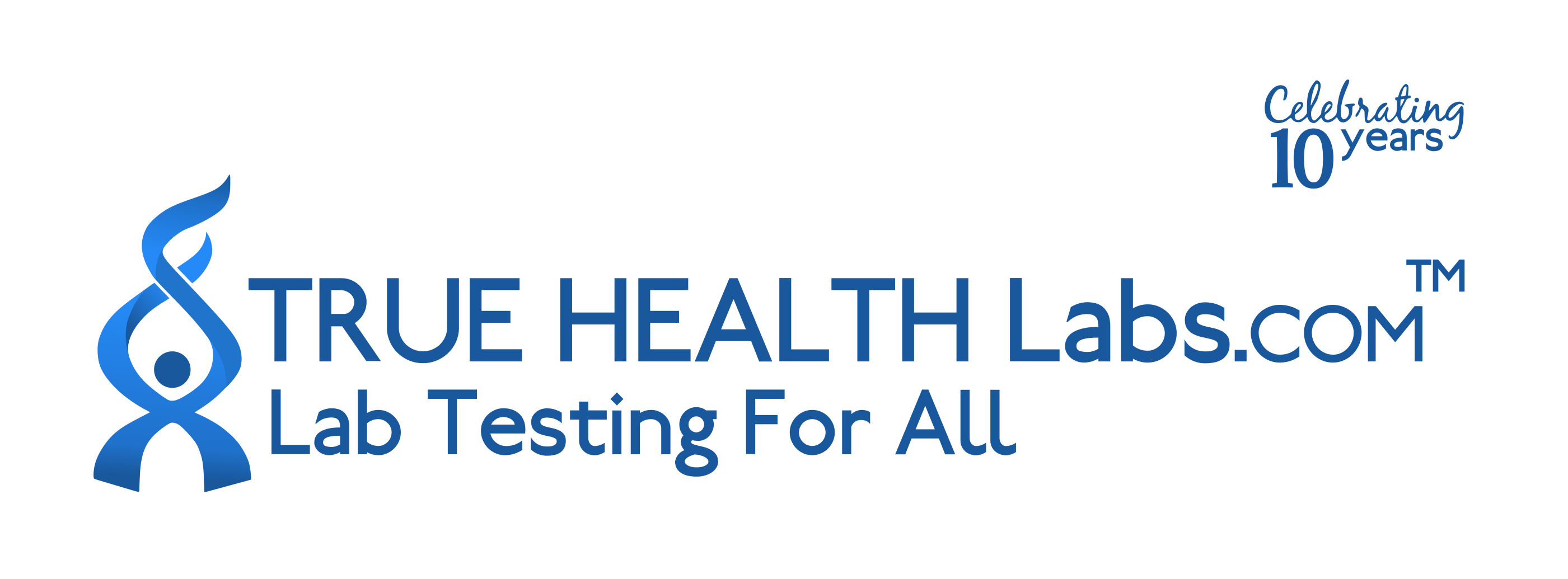Ordering the Organix Organic Acid Test | Advanced
Ordering the Organix Organic Acid Test | Advanced helps you check for imbalances in metabolism, nutrient absorption, and energy production. This test measures organic acids in urine, which can show how well your body breaks down fats, proteins, and carbohydrates. Interestingly, this test can also detect byproducts from bacteria and yeast, giving clues about gut health that are not found in standard blood work.
When ordering this test, you can expect these specific benefits:
- Identifies nutrient deficiencies, such as B vitamins, that may affect energy and mood.
- Reveals markers of oxidative stress, which can impact memory and focus.
- Detects imbalances in neurotransmitter metabolism linked to sleep and mood changes.
- Highlights detoxification issues that may contribute to fatigue or inflammation.
- Shows signs of bacterial or yeast overgrowth that can affect digestion and immune support.
Who Should Consider Advanced Metabolic and Organic Acid Testing
People who feel tired even after a full night’s sleep, struggle with brain fog, or have trouble focusing may benefit from this test. For example, someone who has tried different diets and supplements but still feels low energy and has trouble concentrating could use this test to find out if hidden metabolic imbalances are the cause.
Ordering this test may also be helpful in these situations:
- Persistent digestive discomfort, such as bloating or irregular bowel movements.
- Unexplained mood changes, including anxiety or mild depression.
- Difficulty losing weight despite regular exercise and healthy eating.
- Frequent mild infections or slow recovery from common illnesses.
- People who have a family history of mitochondrial disorders, as these can affect energy production in unexpected ways.
This test gives clear answers about how your body processes nutrients, manages energy, and handles toxins. Delaying this test could mean missing early signs of metabolic or nutrient problems, which may become harder to address if left unchecked. To move forward, consider ordering the test to get a detailed look at your body’s metabolic function.
How to Prepare for Advanced Organic Acid Analysis
Overnight fasting is required for this test, so do not eat or drink anything except water for at least 8 hours before collecting your sample. Always follow the instructions provided by your doctor or healthcare practitioner to make sure your sample is collected correctly and your results are as useful as possible.
Labs Included When Ordering Your Organix Organic Acid Test | Advanced
| Test Name | Reference Range | What This Biomarker Means | Low and High Levels of Organix Organic Acid Test | Advanced |
|---|---|---|---|
| Fatty Acid Metabolism | |||
| Adipate | 0.00–0.07 | Adipate is a byproduct of fat breakdown. It helps show if your body is using fats for energy properly. | High levels mean your body may not be breaking down fats well or you may have a carnitine deficiency.
Low levels mean normal fat metabolism. |
| Suberate | 0.00–0.13 | Suberate is another marker of fat metabolism and can show problems with energy production from fats. | High levels mean possible carnitine deficiency or issues with fatty acid breakdown.
Low levels mean efficient fat metabolism. |
| Ethylmalonate | 0.00–0.13 | Ethylmalonate can show problems with how your body uses certain fats for energy. | High levels mean possible issues with mitochondrial function or fatty acid oxidation.
Low levels mean normal fat processing. |
| Carbohydrate Metabolism | |||
| L-Lactate | 0.00–1.00 | L-Lactate is produced when your body breaks down sugars for energy, especially when oxygen is low. | High levels mean possible problems with energy production or oxygen use.
Low levels mean normal sugar metabolism. |
| Pyruvate | 0.00–0.13 | Pyruvate is a key step in turning food into energy. It helps show if your body is using carbohydrates well. | High levels mean possible issues with energy production or mitochondrial function.
Low levels mean normal carbohydrate breakdown. |
| Beta-Hydroxybutyrate | 0.00–0.13 | Beta-Hydroxybutyrate is a ketone body, showing how your body uses fat for energy when sugar is low. | High levels mean increased fat breakdown, fasting, or low carbohydrate intake.
Low levels mean low fat use for energy. |
| Energy Production | |||
| Citrate | 0.00–0.50 | Citrate is part of the citric acid cycle, which is how your body makes energy from food. | High levels mean possible blockages in energy production.
Low levels mean reduced energy output. |
| cis-Aconitate | 0.00–0.13 | cis-Aconitate is another step in the energy cycle, showing how well your body turns food into energy. | High levels mean possible blockages in the energy cycle.
Low levels mean low energy production. |
| Fumarate | 0.00–0.13 | Fumarate is a marker for how well your mitochondria are working to make energy. | High levels mean possible mitochondrial dysfunction.
Low levels mean normal energy production. |
| Isocitrate | 0.00–0.13 | Isocitrate is another part of the energy cycle, helping to show if your body is making energy efficiently. | High levels mean possible blockages in energy production.
Low levels mean low energy output. |
| Alpha-Ketoglutarate | 0.00–0.13 | Alpha-Ketoglutarate is important for both energy production and amino acid metabolism. | High levels mean possible issues with energy or protein breakdown.
Low levels mean normal metabolism. |
| Succinate | 0.00–0.13 | Succinate is a key step in the energy cycle, showing how well your mitochondria are working. | High levels mean possible mitochondrial dysfunction.
Low levels mean normal energy production. |
| Malate | 0.00–0.13 | Malate is another energy cycle marker, helping to show if your body is making energy from food. | High levels mean possible blockages in energy production.
Low levels mean low energy output. |
| Hydroxymethylglutarate | 0.00–0.13 | Hydroxymethylglutarate is involved in making cholesterol and energy in the body. | High levels mean possible issues with cholesterol or energy production.
Low levels mean normal metabolism. |
| B Vitamin Markers | |||
| Alpha-Ketoisovalerate | 0.00–0.13 | Alpha-Ketoisovalerate shows how well your body is breaking down certain amino acids, which need B vitamins. | High levels mean possible B vitamin deficiency.
Low levels mean normal amino acid metabolism. |
| Beta-Hydroxyisovalerate | 0.00–0.13 | Beta-Hydroxyisovalerate is a marker for biotin (B7) status and amino acid breakdown. | High levels mean possible biotin deficiency.
Low levels mean normal biotin status. |
| Alpha-Ketoisocaproate | 0.00–0.13 | Alpha-Ketoisocaproate helps show if your body is using B vitamins to break down proteins. | High levels mean possible B vitamin deficiency.
Low levels mean normal protein metabolism. |
| Alpha-Keto-Beta-Methylvalerate | 0.00–0.13 | Alpha-Keto-Beta-Methylvalerate is another marker for B vitamin status and amino acid breakdown. | High levels mean possible B vitamin deficiency.
Low levels mean normal metabolism. |
| Xanthurenate | 0.00–0.13 | Xanthurenate is a marker for vitamin B6 status and tryptophan metabolism. | High levels mean possible vitamin B6 deficiency.
Low levels mean normal B6 status. |
| Methylation Markers | |||
| Methylmalonate | 0.00–0.40 | Methylmalonate is a marker for vitamin B12 status and methylation function. | High levels mean possible vitamin B12 deficiency.
Low levels mean normal B12 status. |
| Formiminoglutamate | 0.00–0.13 | Formiminoglutamate is a marker for folate (B9) status and amino acid metabolism. | High levels mean possible folate deficiency.
Low levels mean normal folate status. |
| Neurotransmitter Metabolism | |||
| Vanilmandelate | 0.00–6.00 | Vanilmandelate is a breakdown product of adrenaline and noradrenaline, showing stress response and mood regulation. | High levels mean increased stress or adrenal activity.
Low levels mean low adrenal output. |
| Quinolinate | 0.00–0.13 | Quinolinate is a marker for inflammation and brain function, linked to tryptophan metabolism. | High levels mean possible inflammation or neurotoxicity.
Low levels mean normal brain metabolism. |
| Homovanillate | 0.00–8.00 | Homovanillate is a breakdown product of dopamine, showing how your body processes this neurotransmitter. | High levels mean increased dopamine breakdown.
Low levels mean low dopamine activity. |
| 5-hydroxyindoleacetate | 0.00–8.00 | 5-hydroxyindoleacetate is a marker for serotonin breakdown, linked to mood and sleep. | High levels mean increased serotonin turnover.
Low levels mean low serotonin activity. |
| Kynurenate | 0.00–0.13 | Kynurenate is a product of tryptophan metabolism, linked to brain and immune function. | High levels mean increased tryptophan breakdown.
Low levels mean normal tryptophan metabolism. |
| Picolinate | 0.00–0.13 | Picolinate is another tryptophan breakdown product, showing how your body processes this amino acid. | High levels mean increased tryptophan metabolism.
Low levels mean normal tryptophan processing. |
| Antioxidant Markers | |||
| p-Hydroxyphenyllactate | 0.00–0.13 | p-Hydroxyphenyllactate is a marker for antioxidant status and oxidative stress. | High levels mean increased oxidative stress.
Low levels mean normal antioxidant function. |
| 8-Hydroxy-2′-deoxyguanosine | 0.00–0.13 | 8-Hydroxy-2′-deoxyguanosine is a marker for DNA damage from oxidative stress. | High levels mean increased DNA damage.
Low levels mean low oxidative stress. |
| Detoxification Indicators | |||
| 2-Methylhippurate | 0.00–0.13 | 2-Methylhippurate is a marker for detoxification of certain chemicals and environmental toxins. | High levels mean increased exposure to chemicals.
Low levels mean low exposure or normal detoxification. |
| Orotate | 0.00–0.13 | Orotate is involved in detoxification and can show problems with ammonia removal. | High levels mean possible issues with ammonia detoxification.
Low levels mean normal detoxification. |
| Glucarate | 0.00–0.13 | Glucarate helps show how well your body is removing toxins and hormones. | High levels mean increased detoxification activity.
Low levels mean low detoxification. |
| Alpha-Hydroxybutyrate | 0.00–0.13 | Alpha-Hydroxybutyrate is a marker for detoxification and oxidative stress. | High levels mean increased oxidative stress or detoxification demand.
Low levels mean normal detoxification. |
| Pyroglutamate | 0.00–0.13 | Pyroglutamate is a marker for glutathione status, the body’s main antioxidant. | High levels mean possible glutathione depletion.
Low levels mean normal glutathione status. |
| Sulfate | 0.00–0.13 | Sulfate is important for detoxification and hormone balance. | High levels mean increased detoxification or sulfur intake.
Low levels mean low sulfur or detoxification. |
| Bacterial-General | |||
| Benzoate | 0.00–0.13 | Benzoate is a marker for bacterial activity in the gut and detoxification. | High levels mean increased bacterial activity or detoxification demand.
Low levels mean normal gut bacteria. |
| Hippurate | 0.00–0.13 | Hippurate is another marker for gut bacteria and detoxification. | High levels mean increased gut bacteria or detoxification.
Low levels mean low gut bacteria activity. |
| Phenylacetate | 0.00–0.13 | Phenylacetate is a byproduct of protein breakdown by gut bacteria. | High levels mean increased protein breakdown or gut bacteria activity.
Low levels mean normal protein metabolism. |
| Phenylpropionate | 0.00–0.13 | Phenylpropionate is another marker for gut bacteria and protein breakdown. | High levels mean increased gut bacteria activity.
Low levels mean normal gut function. |
| p-Hydroxybenzoate | 0.00–0.13 | p-Hydroxybenzoate is a marker for bacterial breakdown of certain foods and chemicals. | High levels mean increased bacterial activity.
Low levels mean normal gut bacteria. |
| p-Hydroxyphenylacetate | 0.00–0.13 | p-Hydroxyphenylacetate is a byproduct of protein breakdown by gut bacteria. | High levels mean increased gut bacteria activity.
Low levels mean normal protein metabolism. |
| Indican | 0.00–0.13 | Indican is a marker for protein breakdown and gut bacteria activity. | High levels mean increased protein breakdown or gut bacteria.
Low levels mean normal gut function. |
| Tricarballylate | 0.00–0.13 | Tricarballylate is a marker for certain gut bacteria activity. | High levels mean increased gut bacteria.
Low levels mean normal gut bacteria. |
| L. Acidophilus (Probiotic) | |||
| D-Lactate | 0.00–0.13 | D-Lactate is a byproduct of certain probiotic bacteria, showing gut balance. | High levels mean increased probiotic activity or imbalance.
Low levels mean normal probiotic levels. |
| Clostridial Species | |||
| 3,4 Dihydroxyphenylpropionate | 0.00–0.13 | 3,4 Dihydroxyphenylpropionate is a marker for certain gut bacteria, especially Clostridia. | High levels mean increased Clostridia activity.
Low levels mean normal gut bacteria. |
| Yeast/Fungal | |||
| D-Arabinitol | 0.00–0.13 | D-Arabinitol is a marker for yeast or fungal overgrowth in the gut. | High levels mean increased yeast or fungal activity.
Low levels mean normal yeast levels. |
| Creatinine | Varies by age/sex | Creatinine is used to correct for urine concentration and is not a direct marker of metabolism. | High levels mean concentrated urine.
Low levels mean dilute urine. |
Reference ranges may change slightly as labs update their methods and guidelines. Always check your report for the most current reference values.
Organix Organic Acid Test | Advanced FAQ
Is there Organix Organic Acid Test | Advanced testing near me?
This test is provided as a kit that you can collect at home or at a local draw site—see the draw location link at the top of the page. If you have ongoing fatigue or brain fog, having a nearby collection option makes it easier to get tested without extra travel or delays.
How do I interpret the test results?
Your treating physician should review your results, but we also offer a one-on-one test results review with our clinical team to help you understand your results and next steps.
What is the cost of the test?
The price listed for this test includes standard shipping to you and return shipping to the lab; draw fees may apply. Ordering this test can help you find out if nutrient imbalances or metabolic issues are slowing your progress, so you can address them sooner.
How often should I retest?
Retesting is usually recommended every 6 to 12 months, especially if you are making changes to your diet, supplements, or treatment plan. Regular retesting helps track improvements in metabolism and nutrient status, making it easier to adjust your plan as needed.
How accurate is the test?
This test uses gas chromatography-mass spectrometry (GC-MS) and liquid chromatography-tandem mass spectrometry (LC-MS/MS) for precise measurement of organic acids, with a specificity of 98% and sensitivity of 97%. TrueHealthLabs.com partners with CLIA-certified and CAP-certified laboratories to uphold rigorous testing standards for dependable results.
Important Notes
- This kit cannot be mailed or collected in New York State. Contact us with questions.
Medical Review Board
Reviewed by Jeff Donohue M.D. from Body Logic and Brady Hurst DC, CCCN. Written by True Health Lab’s team of editorial health contributors.
Disclaimer: This information is for educational purposes only and not intended as medical advice. Consult your healthcare provider for personalized guidance.
Why Customers Trust True Health Labs – What People are saying
Also rated 4.6 out of 5 based on 3452 ShopperApproved reviews- See all TrueHealthLabs.com reviews.








